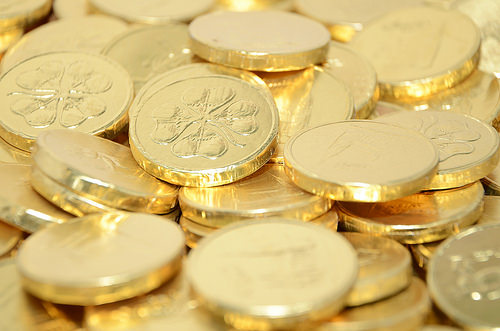
Gold is currently trading at $1,249.90 per ounce, and on the cusp of a reversal. Gold has racked up multiple consecutive sessions of gains, thanks in large part to a weak USD. Presently, retail trade data reveals that a total of 73% of traders have taken out a net long position on gold, and the long/short ratio is 2.75:1. However, it is important to analyse all aspects of current trends, and to trade the fundamentals in the gold market.
While speculators may be going long on gold now, analysts are going short on the precious metal. The consensus among gold analysts is that the precious metal will move lower as the USD reverses to the upside, and interest rates will continue to rise in the US. As a result, the spot gold price will invariably move towards the $1,200 per ounce level, seen just before the Fed raised interest rates by 25-basis points on Wednesday, 15 March 2017. The gold price has whipsawed wildly in 2017, moving from a low of under $1,140 per ounce to around $1,260 per ounce in late February.
Tips for Buying or Selling Gold
There are several important facts to consider before buying or selling gold. Firstly, gold supply/demand is predominantly influenced by the actions of speculators. In this vein, exchange traded funds (ETFs) are the most important barometer for measuring gold demand/supply. The world’s biggest gold ETF is SPDR (GLD), and the buy/sell actions on this fund are an important economic indicator for market sentiment. This fund is traded on the New York Stock Exchange (NYSE) under the ticker GLD. The fund currently has a total of 834.40 metric tons of gold, valued at $33.5 billion. Any major buy/sell movements on this fund will naturally affect the price of gold. There are also other major market movers for the gold price, including the federal funds rate. Whenever monetary policy is hawkish, demand for the USD increases. Monetary tightening takes on various forms, including increasing interest rates, and the sale of assets by the Fed.
Fiscal Policy and the Gold Price: A Valuable Lesson
Fiscal policy can also affect the USD by either stimulating the economy, or making it unattractive for foreign investors. Higher taxation for example is a disincentive to investment, while lower taxation and fiscal spending boost USD demand and drive gold markets. Individuals can capitalise on these market movements by dabbling in binary options gold trading. Unlike traditional options, where gold needs to appreciate in order for profits to accrue, binary options are entirely different. Profits can be generated by correctly anticipating the direction of price movement, not the size of price movement.
For example, if fiscal stimulus measures are forecast, gold traders may opt for put options on gold. The rationale behind this may be that fiscal stimulus leads to a greater demand for USD, which is a disincentive to gold bugs. By contrast, monetary easing may lead to a weaker USD and increased demand for gold. The rationale behind this is that gold traders will be able to purchase more per ounce of USD-denominated gold than before, leading to increased demand and an increased price. Hence, call options on gold bullion.
With this contrarian form of trading, it is entirely possible to profit off marginal price movements in either direction. Fixed returns are guaranteed for in the money finishes. Remember, gold is the preferred asset when a risk-off approach is adopted to equities, and when geopolitical uncertainty hits the financial markets. Gold will always retain favour with traders and investors during difficult times, although it is not a good store of value.
photo credit: Theo Crazzolara Chocolate coins via photopin (license)